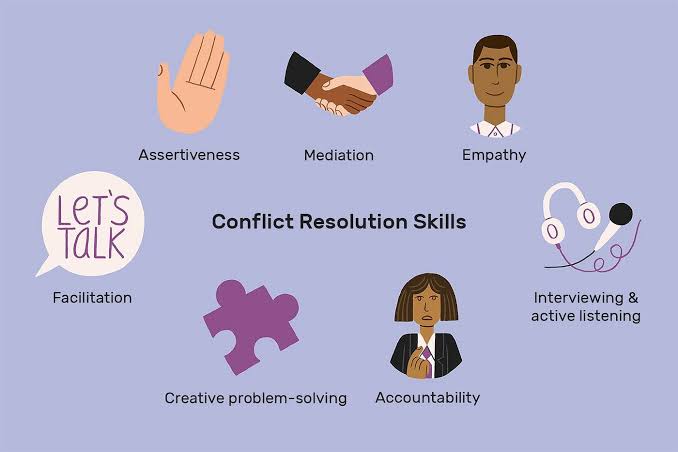As of July 2025, Pay-Per-Click (PPC) advertising remains one of the most powerful digital marketing strategies for businesses aiming for instant visibility, increased traffic, and higher conversions. In an increasingly crowded and competitive digital landscape, a carefully crafted PPC strategy is crucial for success. Whether you’re a small business owner or a member of a large marketing team, employing effective PPC techniques can help you attract qualified leads, maximize your return on ad spend (ROAS), and achieve substantial sales growth.
PPC, when executed properly, offers real-time control over your marketing budget, highly measurable results, and precise targeting capabilities. However, the evolution of platforms like Google Ads, Microsoft Advertising, and paid social media channels means that businesses need to go beyond basic ad placement to compete. In 2025, successful PPC strategies involve a deep understanding of customer behavior, refined audience segmentation, automation, and advanced analytics.
Setting Clear Objectives Before Launching
Every successful PPC campaign begins with clearly defined objectives. Before diving into keyword research or ad creation, businesses must first decide what they want to achieve. Common PPC goals include increasing website traffic, generating leads, boosting product sales, or building brand awareness.
In July 2025, with rising ad costs and smarter competition, vague goals are no longer enough. Advertisers must set specific, measurable targets such as a cost-per-acquisition (CPA) under a certain dollar amount, or a click-through rate (CTR) above a benchmark. These objectives guide the structure of the campaign and help determine bidding strategies, budget allocation, and key performance indicators (KPIs) to monitor.
Conducting Comprehensive Keyword Research
Keyword research remains the foundation of any PPC campaign. In 2025, tools like Google’s Keyword Planner, SEMrush, and Ahrefs continue to offer insights into search volume, competition level, and user intent. However, advertisers are now advised to move beyond just high-volume keywords and explore long-tail and voice-search optimized keywords as well.
Understanding user intent is especially critical. For example, someone searching “best affordable headphones for gaming” is much closer to making a purchase than someone simply typing “headphones.” By targeting intent-driven keywords, businesses can reach users at the bottom of the sales funnel and increase conversion rates without blowing through their budget.
Additionally, with AI integration in most platforms, dynamic keyword insertion and predictive keyword suggestions have become common. These features help tailor ad content more closely to search queries, enhancing relevance and boosting Quality Scores.
Crafting Compelling Ad Copy and Creative
Even the best-targeted ad will fall flat without engaging copy and visuals. As of July 2025, effective PPC ads must immediately capture attention while communicating value. Headlines need to be concise and relevant, offering a clear benefit or unique selling proposition. Ad descriptions should build on this by addressing potential pain points and including strong calls to action (CTAs) such as “Shop Now,” “Get a Free Quote,” or “Try Risk-Free.”
Visual content also plays a crucial role, particularly on platforms like Meta Ads (Facebook and Instagram) and YouTube. High-quality images or short-form videos that align with the ad copy can dramatically improve engagement. With the growth of mobile and short attention spans, thumb-stopping content is more valuable than ever.
A/B testing remains a best practice for copy and creative. By experimenting with multiple variations of headlines, descriptions, and visuals, advertisers can identify which combinations perform best and continuously refine their messaging.
Optimizing Landing Pages for Conversions
A common mistake in PPC advertising is investing in clicks without preparing the destination. In 2025, conversion-optimized landing pages are critical to campaign success. These pages should load quickly, be mobile-responsive, and maintain consistency with the ad’s message and design.
Key elements of high-performing landing pages include a clear headline, a compelling value proposition, benefit-focused content, social proof like testimonials or reviews, and a prominent CTA button. Minimizing distractions and making forms as simple as possible can also help reduce bounce rates and improve lead generation.
Platforms like Unbounce, Instapage, and even WordPress offer advanced landing page builders with AI tools that recommend layout and copy improvements based on engagement data.
Leveraging Smart Bidding and Automation
PPC advertising has become increasingly data-driven and automated. Google Ads and Microsoft Advertising now offer robust smart bidding strategies that use machine learning to optimize bids in real time for conversions or conversion value.
In July 2025, businesses are encouraged to use smart bidding options such as Target CPA, Target ROAS, and Maximize Conversions to allow the platforms to auto-adjust bids based on device, location, time of day, and other contextual signals. This approach frees up time and improves performance by reacting faster than manual bidding ever could.
However, automation doesn’t eliminate the need for human oversight. Advertisers must continue to monitor campaigns, adjust underperforming ads, and provide accurate conversion tracking data to feed the algorithms.
Utilizing Remarketing to Re-Engage Visitors
Remarketing is one of the most effective ways to boost ROI in PPC. It targets users who have previously visited your website or interacted with your brand but didn’t convert. In 2025, remarketing campaigns can be highly personalized, showing ads based on specific product views, time spent on the site, or cart abandonment.
Platforms like Google Display Network, Meta Ads, and LinkedIn offer advanced audience segmentation tools that let you create remarketing lists based on user behavior. By tailoring messaging to users who are already familiar with your brand, you can increase conversion likelihood while reducing customer acquisition costs.
Dynamic remarketing, which displays exact products users viewed, is particularly effective for e-commerce brands aiming to recover lost sales.
Measuring Success and Optimizing Campaigns
Continuous measurement is essential for improving PPC campaign performance. As of 2025, advertisers rely on tools like Google Analytics 4, Microsoft Clarity, and platform-native dashboards to track metrics such as CTR, CPA, conversion rate, and ROAS.
Attribution modeling has also improved, with data-driven attribution becoming the standard. This allows marketers to better understand the touchpoints that lead to a conversion and adjust budgets accordingly.
Campaigns should be reviewed frequently, with underperforming ads paused or revised and budgets shifted toward high-performing segments. Regular audits of keyword performance, search terms, and negative keyword lists are also necessary to avoid wasted spend.
Final Thoughts
Pay-Per-Click advertising in 2025 is more dynamic and data-intensive than ever before. To drive traffic and sales effectively, businesses must go beyond basic tactics and adopt a strategic approach that includes detailed keyword research, smart bidding, compelling creatives, optimized landing pages, and continuous campaign refinement.
By embracing automation tools while maintaining a human touch in oversight and creativity, businesses can fully leverage the potential of PPC to grow their online presence, reach new audiences, and drive profitable results. In a digital economy where attention is scarce and competition is fierce, a well-executed PPC strategy remains a powerful path to measurable success.



